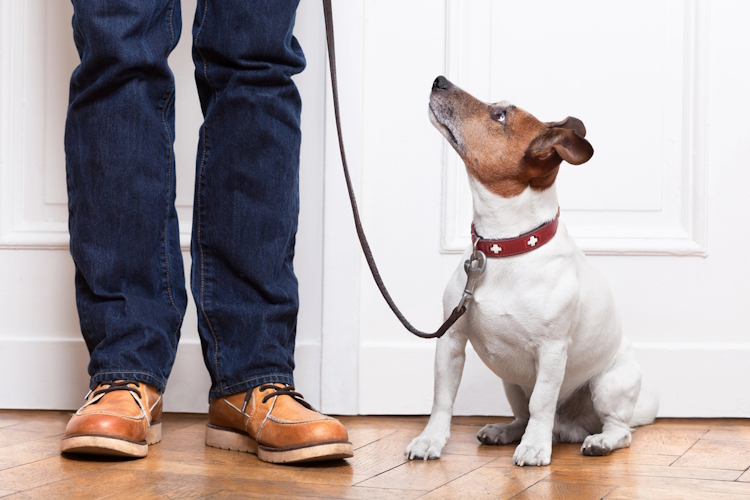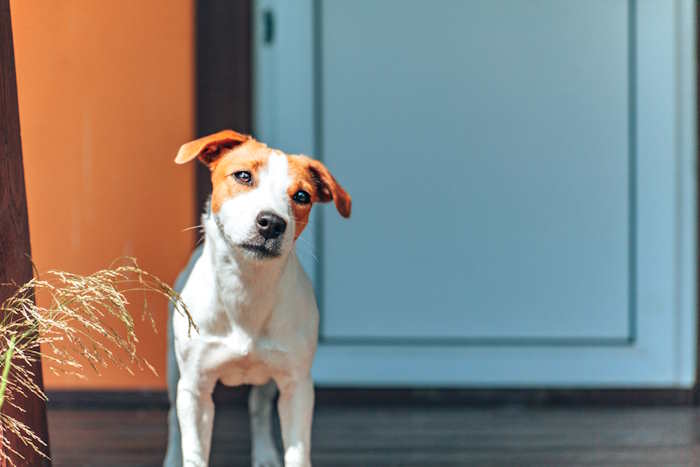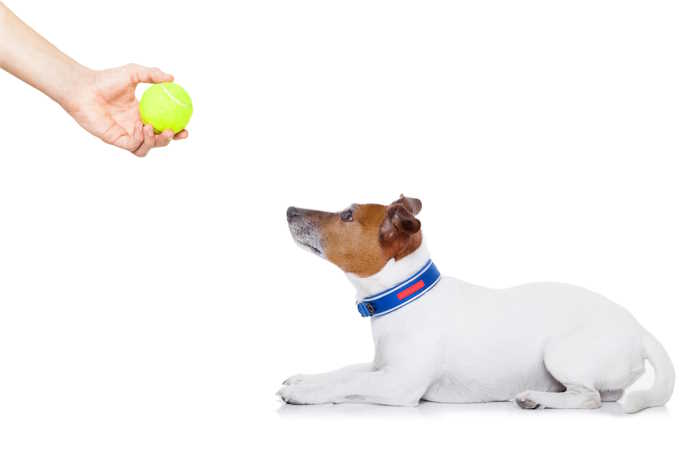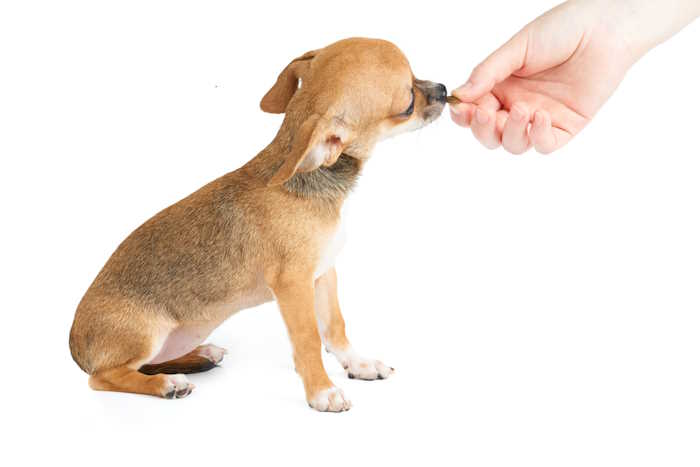- Small Dog Place Home
- Training
- Dog Training Tips for New Owners
Top 10 Dog Training Tips for New Owners
Dog Training Tips for New Owners |Published 02-27-2024
Congratulations on welcoming a new furry friend into your life! As a new dog owner, you may be feeling overwhelmed or unsure of where to start when it comes to training your pup.
That's why we've compiled the top 10 dog training tips that every new owner should know. Whether you're teaching basic commands or addressing behavior issues, these tips will help you create a strong and lasting bond with your four-legged companion.
Get ready to unleash your dog's full potential with our dog training tips for new owners.

Dog training is crucial for responsible ownership, fostering a strong bond, and ensuring a well-behaved, obedient pet. Regardless of age, proper training techniques make a significant impact.
Successful training hinges on comprehending canine psychology, as dogs respond well to positive reinforcement and consistency. Patience, kindness, and clear communication are essential.
Why is Dog Training Important?
Dog training is integral to responsible pet ownership, encompassing obedience, good behavior, and socialization. Despite being underestimated by some, it ensures safety and improves the quality of life for both dogs and those around them.
Proper training reduces the likelihood of aggressive or destructive behaviors, creating a safe environment and fostering a better-behaved dog for enjoyable public outings.
Positive reinforcement methods establish a strong bond, teaching essential commands for easier everyday activities.
Beyond day-to-day benefits, dog training addresses behavioral issues and establishes discipline.
Structured programs such as dog training in Oregon, provide socialization opportunities, reducing fear-based aggression and boosting confidence.
Prioritizing training, whether for a new puppy or an older rescue dog, sets a foundation for harmonious and safe companionship.

1. Understanding Your Dog's Behavior
To properly train their furry companions, new dog owners need to understand the unique behaviors of their pets.
Observing responses in a range of situations can help one understand temperament and personality. Reading body language, like as ear position and tail movement, is essential to understanding emotions.
Examples of vocalizations with separate meanings include barking and growling. Understanding the origins of behavior is crucial as prior experiences or external stimuli can influence behavior. Characteristics unique to a breed must be considered.
The secret is to be patient and to choose positive reinforcement over punishment.
A thorough comprehension necessitates observation, the ability to read body language and vocalizations, careful consideration of prior experiences and breed-specific characteristics, as well as persistence and patience. A solid relationship built on trust and understanding may be formed with commitment.
Two of the most important training tips for new owners is to be patient and to choose positive reinforcement over punishment.
A thorough comprehension necessitates observation, the ability to read body language and vocalizations, careful consideration of prior experiences and breed-specific characteristics, as well as persistence and patience. A solid relationship built on trust and understanding may be formed with commitment.
2. Positive Reinforcement

Strong bonds are formed and positive reinforcement is a potent dog training method that rewards excellent behavior. It's important to know what excites your dog—be it toys, attention, rewards, or praise. When incentives are provided just after the desired behavior, timing is crucial.
It's important to be consistent; give clear instructions, start small, and concentrate on one habit at a time. Redirections and ignoring unwanted conduct are preferable to punishment.
Changing up your rewards might help you stay motivated. Given that dogs learn at their rate, patience is crucial. Frequent short training sessions keep kids interested.

Good conduct and a solid relationship are guaranteed by positive reinforcement. Being patient, understanding your dog's intentions, and being consistent can help you train your dog to be a well-mannered friend.
3. Consistency
Consistency is vital in dog training, providing clear expectations and boundaries for your pet. Using consistent commands, hand signals, tone of voice, and body language is essential.
Establishing a routine with short, frequent training sessions enhances learning, as dogs thrive on structure.
Avoid changing tactics during setbacks, as consistency is crucial for effective training. This applies to consequences as well, prioritizing positive reinforcement over punishment. Consistent rules for all household members interacting with the dog prevent confusion.
Patience is key, to recognizing the unique traits of each dog. While consistency takes time, it establishes clear expectations, maintains structure, and reinforces positive behaviors, fostering a strong bond with your furry companion.
4. Start with Basic Commands
New dog owners should prioritize establishing a solid foundation of basic commands as the initial step in training their furry companions.
These commands serve as fundamental building blocks for more advanced training, helping dogs comprehend expectations in various situations.
Key basic commands include:
• Sit: Easily taught by moving a treat from the dog's nose upward, prompting a sitting position. Say "sit" and reward with treats while praising.
• Stay: Crucial for safety, especially during walks. Instruct your dog to stay by holding out a hand like a stop sign, taking a step back, and rewarding with praise or treats.
• Come: Useful for off-leash situations or when your dog wanders too far during walks. Gently pull the leash while saying "come" and reward upon their return.
• Lie down: Encourages relaxation, particularly in situations where an overly excited dog could be disruptive. From a sitting position, guide the dog's nose down with a treat and say "down," rewarding them when they comply.
• Leave it: Essential for preventing the dog from picking up harmful items. Place a treat on the ground, cover it with your hand, say "leave it," and reward them when they refrain from attempting to get it.
More Dog Training Tips for New Owners: Basic Commands
Consistency is crucial in training; practice these commands daily using positive reinforcement techniques like treats, praise, and affection. With dedication and patience, your furry friend will master these foundational commands, leading to a smoother and happier life for both of you.
5. Be Patient
New dog owners must prioritize patience, recognizing that dogs are intelligent beings with unique personalities. Adjusting to a new environment and learning appropriate behaviors take time.
Training requires gradual and consistent efforts, mirroring the process for humans. Rushing leads to frustration for both the owner and the dog.
Acknowledge that your dog is absorbing entirely new information, necessitating ample time and space. Patience involves accepting setbacks during training.
Dogs may not grasp commands instantly, and that's acceptable. Staying calm and composed, instead of frustrated or scolding, allows for reflection and modification of the training approach.
Consistency is integral to patience, establishing clear rules early to avoid confusion. Dogs thrive on routines, making it crucial for everyone in the household to follow the same rules. Allow your dog sufficient time to understand desired behaviors. Short, frequent training sessions are more effective than prolonged ones to prevent overwhelm.
Recognize that dogs learn at individual paces, requiring persistent patience and positive reinforcement. In essence, patience is a vital quality for new dog owners. It fosters a strong bond and facilitates the transformation of dogs into well-behaved companions over time.
6. Socialize Your Dog
Socialization is paramount for any dog's training, irrespective of age or breed. This process exposes your dog to diverse people, animals, and environments, fostering comfort and confidence in various situations.
Proper socialization, particularly during the formative weeks (8-16), shapes a dog's behavior and prevents issues like fearfulness or aggression. Socializing involves gradual exposure and positive reinforcement.
Introduce your dog to family and friends, take daily walks, schedule playdates, and visit pet-friendly places. Reward positive reactions with treats or praise. For adult dogs, the process may take more time; introduce them slowly to new environments, remain calm, and reward positive interactions.
Socialization is pivotal for your dog's behavior and well-being, creating a confident and friendly companion. Patience, consistency, and positive reinforcement are key to a happy, well-adjusted pup.
7. Reward Good Behavior
Positive reinforcement is a potent tool in dog training, emphasizing the reward for good behavior rather than punishing the negative. This approach not only deepens the bond between you and your dog but also communicates which behaviors are desirable.
Start by identifying behaviors to reinforce, such as sitting calmly or not jumping on people. Prioritize these behaviors and select suitable rewards, including treats, praise, playtime, or toys.
Varying rewards maintain your dog's motivation. Set clear expectations during training, using consistent verbal cues like "good job" followed by immediate rewards.
Initially, use tasty treats to teach the desired behavior, gradually phasing them out as your dog becomes proficient. Timing is crucial; rewards must follow the desired behavior promptly for effective association.
Avoid overusing rewards to prevent dependency, making it harder for your dog to follow commands without expecting a treat each time.
Beyond structured training, acknowledge and praise good behavior in everyday situations. Consistency is paramount, ensuring your dog understands expectations and is motivated to repeat desired behaviors.
Rewarding good behavior, when done with specificity, appropriate rewards, consistent cues, and timing, and without overuse, effectively trains your dog and strengthens your bond. Be patient and consistent throughout the process, and soon, you'll have a well-behaved furry friend.
8. Use a Firm and Calm Voice
Dogs respond best to a tone that is firm yet not aggressive. Yelling or aggressive tones may instill fear or anxiety, hindering the learning process. Conversely, a gentle or weak tone can convey uncertainty, making it easier for your dog to ignore commands.
To achieve a firm and calm voice:
- Practice Confidence: Spend time practicing speaking confidently in front of a mirror before training sessions. This helps you develop a steady tone that conveys authority without being threatening.
- Avoid Shouting: Instead of raising your voice, opt for lower tones that are proven to be more effective in capturing a dog's attention.
- Be Consistent: Dogs rely on consistency; using different tones can confuse them. Maintain a steady tone, regardless of your mood.
- Positive Reinforcement: Combine your tone with positive reinforcement, rewarding good behavior with treats or praise.
- Take Breaks: If tension arises during training, take breaks to maintain a positive energy level for both you and your dog.
Consistent use of a firm yet calm voice establishes you as the leader and earns your dog's respect. With patience and practice, this positive and confident communication style will contribute to effective training.
9. Set Realistic Expectations
New dog owners often make the mistake of having unrealistic expectations for their furry companions. While many envision a picture-perfect dog ownership, it's crucial to acknowledge the uniqueness of each dog-owner relationship.
Dogs have individual personalities, needs, and behaviors, and setting realistic expectations is vital.
Understanding your dog's breed and characteristics is the first step. Each breed has distinct traits influencing behavior and training requirements.
Puppies, in particular, need time to grasp rules and boundaries, requiring patience and consistency in training.
Recognizing your limitations as an owner is equally important. Consider your time, resources, and experience with dogs. Don't expect immediate mastery of complex commands, especially if your availability is limited.
Addressing behavioral issues or health concerns is crucial for realistic goal-setting. For instance, issues like separation anxiety or fear aggression require extra attention before advancing to advanced obedience training.
Accepting that not every day will go as planned and viewing setbacks as learning opportunities fosters a successful and enjoyable relationship with your furry friend.
Setting realistic expectations means understanding the breed, being patient, knowing your limitations, and embracing the non-linear nature of progress.
10. Seek Professional Help if Needed
New dog owners often find it challenging to navigate the myriad training methods, prompting consideration of professional help.
Seeking a trained professional offers several advantages, particularly personalized guidance from an experienced trainer well-versed in various breeds and behaviors.
It's crucial to research and choose a reputable trainer, emphasizing certifications, positive reinforcement techniques, and client reviews.
Private one-on-one sessions at home or group classes provide tailored attention and socialization opportunities. Specialized training programs designed for puppies or dogs with specific behavioral issues offer structured learning experiences.
Certified animal behaviorists, with advanced degrees, address complex problems like aggression or anxiety.
While some may balk at the cost, investing in professional training early can prevent long-term issues, saving time and money. Seeking professional help demonstrates dedication to your pet's well-being.
Combining expert guidance with consistency and patience ensures a well-behaved, joyful companion for years to come.
Practice, Practice, Practice
In conclusion, creating a well-behaved and happy furry companion involves consistent practice and foundational training.
Establishing a routine, starting early, breaking up sessions, utilizing positive reinforcement, practicing patience, and maintaining consistency are key elements.
Dogs, like humans, learn at their own pace, emphasizing the importance of understanding and patience throughout the process.
By celebrating small victories and committing to these principles, significant progress in your dog's behavior is achievable.
Ultimately, the journey of regular practice and dedicated training not only builds a strong bond but also fosters good behavior habits, ensuring a harmonious relationship with your canine companion.
I hope these ten dog training tips for new owners has given you some ideas and motivation to begin your new adventure.
Dog Training Tips for New Owners
Pin for Future Reference
About Janice (author and voice behind this site)
Janice Jones has lived with dogs and cats for most of her life and worked as a veterinary technician for over a decade. She has also been a small-breed dog breeder and rescue advocate and holds academic training in psychology, biology, nursing, and mental health counseling. Her work focuses on helping dog owners make informed, responsible decisions rooted in experience, education, and compassion.
When not writing, reading, or researching dog-related topics, she likes to spend time with her six Shih Tzu dogs, her husband, and her family, as well as knitting and crocheting. She is also the voice behind Miracle Shih Tzu and Smart-Knit-Crocheting
Does This Article Deserve Your Thumbs Up?
We always appreciate your support and encouragement. Your thumbs up means so much to us. Please like this article.
If you find this page or any page on Small Dog Place Helpful, or useful in anyway, I'd love it if you would click the small heart found on the bottom right of each page.
You can also share or bookmark this page -- just click on the:
Your second block of text...

Free Monthly Newsletter
Sign Up for Our Free Newsletter and get our Free Gift to You.
my E-book, The Top 10 Mistakes People Make When Choosing a Dog (and how to avoid them)


